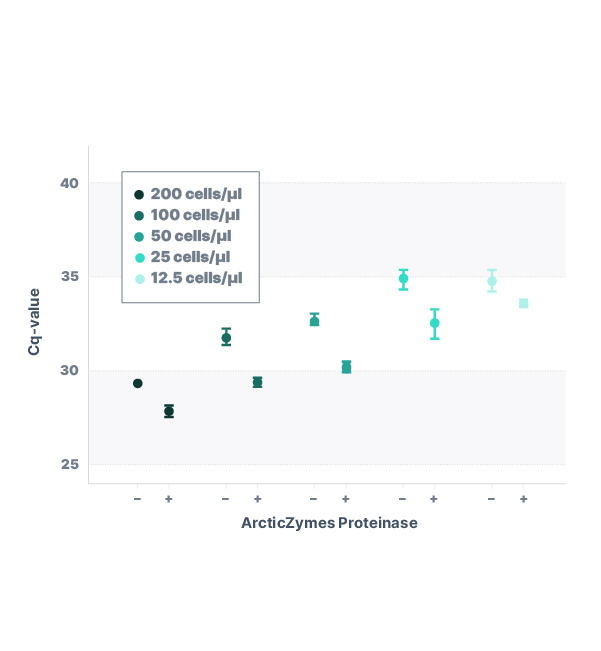
ArcticZymes Proteinase
ArcticZymes Proteinase
OverView
ArcticZymes Proteinase is an unspecific endopeptidase originating from an Arctic marine microbial source. It has broad substrate specificity and is easy to inactivate after use.
Histones and other proteins are known to protect nucleic acids from interacting optimally with other DNA binding proteins and enzymes. ArcticZymes Proteinase is ideally suited for transforming chromatin and other dense nucleic acids to naked DNA. The enzyme is easy to heat-inactivate. This allows thermal inactivation at temperatures allowing RNA integrity as well as avoiding dissociation of dsDNA.
Key Features
- Easy to inactivate after use: 15 - 30 min at 55 - 60°C
- Broad substrate specificity
- Active at high salt concentrations
- Compatible with downstream DNA analyses
- Available in Glycerol FREE formulation
Applications
- Lysis and releasing nucleic acid from single-cells and small tissue samples
- Optimization of DNA/RNA yields from nucleic acids when added to extraction procedures
Figures
Properties
Recommended Protocols
Ordering Info
Documents
Publications
FAQs
Optimal enzyme activity is observed between pH 8–10.
The temperature optimum is 37 °C, with a recommended operational range of 25–37 °C.
AZ Proteinase can be inactivated by incubation at temperatures above 53 °C for 15–60 minutes.
The inactivation temperature and duration can be adjusted based on the required application or desired stringency of residual protease activity.Low levels of Ca²⁺ and moderate concentrations of monovalent cations significantly affect inactivation efficiency.
For best results, use Ca²⁺ below 80 µM and NaCl above 20 mM.
AZ Proteinase is not dependent on divalent cations such as calcium (Ca²⁺) for activity and is therefore active in buffers containing EDTA (at reaction temperatures below 40 °C).
The enzyme’s activity is stimulated by SDS (0.2–1%) and by 1–5 M urea.
AZ Proteinase also shows good activity in biological samples such as blood, serum, and plasma.






